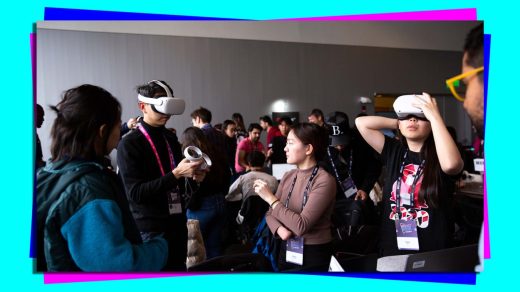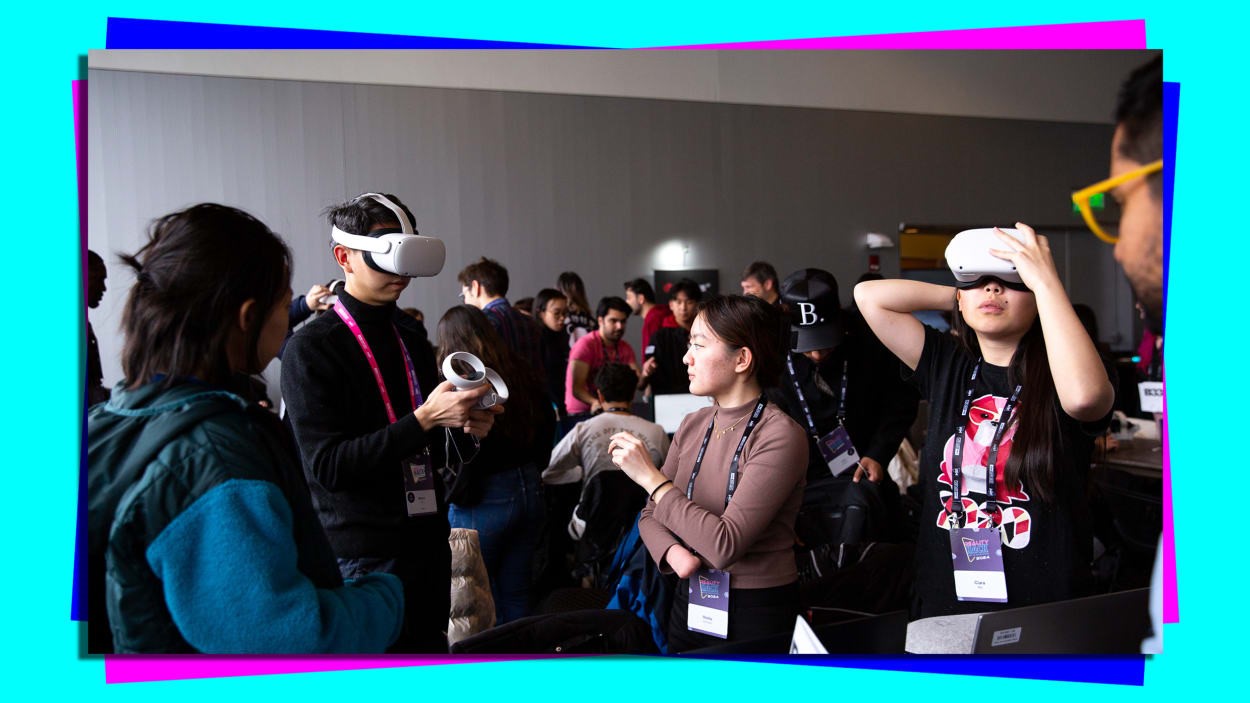How an MIT hackathon restored my faith in AR, VR, and beyond
You’re reading Plugged In, Fast Company’s weekly tech newsletter. I’m global technology editor Harry McCracken, and I’m certainly happy you stopped by. If a friend or colleague forwarded this edition to you—or you’re reading it on FastCompany.com—you can check out previous issues and sign up to get it yourself every Wednesday morning. Your email—comments, ideas, random musings about tech—are always welcome: Shoot me a message at hmccracken@fastcompany.com.
Over the past week, I’ve spent a large chunk of my computing life wearing Apple’s new Vision Pro headset. Entering the brave new world of “spatial computing” has been a fascinating experience, and I intend to write more about it. But when it comes to thinking about how reality and technology will intersect in the future, I was at least as invigorated by something I did right before I got my hands on the Vision Pro.
That was serving as a panelist and judge at Reality Hack, an annual hackathon held at the Massachusetts Institute of Technology. More than 600 people—many but not all of them students—descended on the university’s campus to participate in the event’s seventh edition. They formed teams, spent a few days brainstorming and building XR experiences from scratch, and competed for more than $40,000 in prizes to help them further pursue their projects.
If you don’t remember offhand what “XR” stands for, no need to apologize: After seeing it used in conjunction with the MIT event, I had to refresh my own memory. It’s short for extended reality, a kitchen-sink term that encompasses a raft of other concepts involving weaving together the physical world and digital elements: virtual reality, augmented reality, mixed reality, merged reality, and probably several other forms of reality I’m forgetting at the moment. The Vision Pro’s spatial computing is somewhere in there, too. So is the metaverse, although I don’t recall hearing that tarnished buzzword once during my time at Reality Hack.
The fact that the world hasn’t landed on one universally understood term to describe this stuff is evidence that we’re still early in the process of figuring it out. Reality-bending killer apps have been slow to emerge: Maybe the most famous one, Pokémon Go, is practically an old-timer, with its eighth birthday approaching. It’s tempting to dismiss the whole XR/VR/AR/MR premise as having never lived up to its potential, especially given that AI has sucked up the entire tech industry’s capacity to think about next big things.
At MIT, however, the rawness of XR and its subcategories felt like a pro rather than a con. In ways that might be tougher in a better-established field, it provided a tapestry for wild experimentation that transcended plenty of my preconceived notions.
The projects that made it to the final round of judging convey the diversity of the ideas that sprung from the Reality Hack teams. One group 3D-printed a microscope that uses a smartphone to simulate blood cells, aiming to provide an educational aid to schools that might be short on traditional lab equipment. Another created a smartphone-based experience that lets people share digital notes about real-world street art such as murals. A third brought a mixed-reality interface to air traffic control. And the biggest prize winner used sensors to help people with missing limbs control digital ones in VR. You can check out dozens of other entries at Devpost; ZDNet’s Jason Hiner, a fellow panelist-judge, also reported on his experience at the event.
Every project was entirely conceived during the hackathon (indeed, doing any planning or coding before the event began was strictly prohibited). Teams used off-the-shelf tech such as Unity’s tool kit for constructing 3D worlds, Niantic’s web-based AR platform 8th Wall (a 2023 Fast Company Next Big Things in Tech winner), Looking Glass holographic displays, and the open-source Project Northstar headset. And they worked away furiously at tables crammed into a few big halls at MIT—some at its fabled Media Lab—where the communal spirit was obvious and plenty of energy-replenishing Red Bull was on hand.
With the Vision Pro, we’re seeing what Apple can come up with when it spends years building a headset, tightly controls all the hardware and software, and sets a $3,499 price for the results. By contrast, Reality Hack emphasized speed, openness, existing resources, and technologies that don’t cost a mint. That’s what allowed so many attendees to experiment with so many possibilities so efficiently.
Wherever these efforts go from here, their ingenuity was infectious. I flew home from Boston feeling like my batteries had been recharged—and maybe slightly less jaded about the future of technology in general.
Fast Company – technology
(24)



